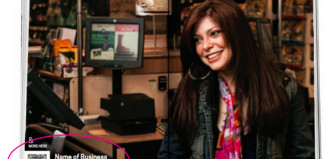Imagine this: two cowboys–tall and lean, in pressed denim and fresh shirts–enter a saloon. Boots polished, hats crisp, the boys sidle up to the very long bar and order drinks. unfamiliar with the drinks list, the boys let the dealer choose. After a few minutes of careful preparation, the drinks arrive in tall elegant champagne flutes. the boys start laughing, thinking the bartender must be playing some sort of practical joke on them.
“That’s how we really serve them,” the bartender explains of the French 75s, as the giddy recipients pose with the glass- es and take cell phone pictures of each other. This goes on for a minute or so, until one of the fellas asks the bewildered bartender: “Now can we have ‘em in a normal glass?” The bartender takes the man’s meaning and pours the cocktails into rocks glasses.
The saloon in this story is the historic Esquire Tavern in San Antonio, and I captured this moment a few months ago when I was working on the recent restoration and reopening of that grand old bar. The Esquire was open from 1933 to 2006 and was a drinking man’s bar, the type of place with no bar stools, a rustic charm (which we might more recently describe as “divey”), where cuspidors seem more appropriate than cocktail glasses. It is the type of place that some adventurous young cowboys might get cleaned up for a night on the town. But the adventure they had in mind was probably not as much of the culinary variety, but of another sort, given the bar’s rough-and-tumble reputation before the recent re- opening. Though the Esquire is a singular establishment, this incident plays out every night in bars and banquets across the country. I have had more male customers than I can count ask me to transfer a drink from a martini-style cocktail glass to something more rugged. I have had a bar owner client instruct me to put more “female” drinks on the menu. This begs the inquiry: Given the biologically neutral condition of the cocktail glass, how did we arrive at this point? How do we assign gender to a drink? What makes a cocktail or glass girlie or manly?
From colonial times to the dawn of Prohibition, bars and taverns were largely a male-dominated space. If women were in bars, it was generally because they were working–either as a tavern keeper, or as a prostitute. (It was no coincidence that in the early days of the twentieth century, the women’s suffrage movement was tied to the Temperance movement, given that much of the work of politics took place behind the tavern doors–a space off limits to most women at the time.) This is not to say that women weren’t drinking–the housekeeper’s manuals of the 18th and 19th centuries are chockfull of caudles, possets, shrubs and other lower alcohol beverages that it is logical to assume the ladies were drinking at home while their men were at the pub. It is often said that one of the only positive outcomes of Prohibition is that it integrated public drinking spaces for women. So the cocktail glass predates the public use of cocktail glasses by women by a matter of several decades. In its earliest days, at least, men did not feel emasculated by stemware.
Let’s look at recent precedents. Throughout the golden age of Hollywood, images abound of America’s leading men sipping cocktails from stemmed glasses, often alongside their female counterparts, and many times while in pursuit of same. Unless the movie was a Western, chances are that if there was a drinking scene, somewhere there were men drink- ing out of cocktail glasses. James Bond is perhaps the most prominent ex- emplar, and for him the martini became something of a calling card. Across seven stars and almost as many decades, Bond and his martini glass have been a symbol of masculine sophistication. We have to look to more recent history to find the almost complete feminization of the cocktail glass in popular culture, to what I call the Sex-and-the-City effect.
The Cosmopolitan cocktail, known as the “Cosmo,” started its life in the waning decades of twentieth-century nightclub life and hit full stride in early-1990s New York City. It gained widespread, national appeal when it was portrayed as the drink of choice in Sex and the City. Before long, the runaway hit from NYC hot spots was all the rage at chain restaurants in middle America. Everybody had to have a Cosmo. The lingering effects of the Cosmopolitan craze are debatable. On one side, you have the argument that the Cosmo was a gateway drink that allowed Americans to start exploring other cocktails–though its profile is simplistic compared to many other classic cocktails, this approachability eased drinkers into trying more complex drinks.
Another argument is that the Cosmo craze ruined the cocktail (and pink drinks) for some men. I think much of the push back against cocktails, such as with the two cowboys in the opening of this piece, is rooted in sex- ism and even homophobia. There is nothing “feminine” about the Cosmo- politan. It is a big glass of booze, and when made properly, is balanced and perfectly drinkable. It is no less intoxicating than a Margarita or count- less other similar drinks that are deemed suitable for manly consumption. Even the color–at best a light coral pink, at worst a toxic neon red–has not always been associated with “girlie” drinks. For generations, the drink of choice for Britain’s navy men was Pink Gin, a combination of Plymouth gin and Angostura bitters that is sure to put the figurative hair on anyone’s chest. But take the pink drink and the conical glass and put it in the hands of sexually, socially and financially empowered women, and you have a recipe for disaster. Some men just can’t hang with that. And that’s unfor- tunate.
In the 1949 book Esquire’s Handbook for Hosts, there is a page entitled “Something for the Girls.” It may surprise the modern tippler that some of these girly drinks start with a full 2 oz. measure of gin or brandy. It turns out that even the patriarchal perception of what women drink has evolved substantially over the decades. I was recently at a planning session with a new restaurant client, when the restaurant’s PR guru asked what drinks we were “targeting for the women.” The (female) general manager offered, “My favorite drink is the Manhattan,” much to the publicist’s surprise. Wherever the notion of gender propriety in cocktails came from, it is long overdo for retirement. The reality is that women drink whiskey, men drink pink drinks, and drinkers of all shapes and sizes should drink out of those dainty stemmed glasses, if it is their prerogative to do so


































